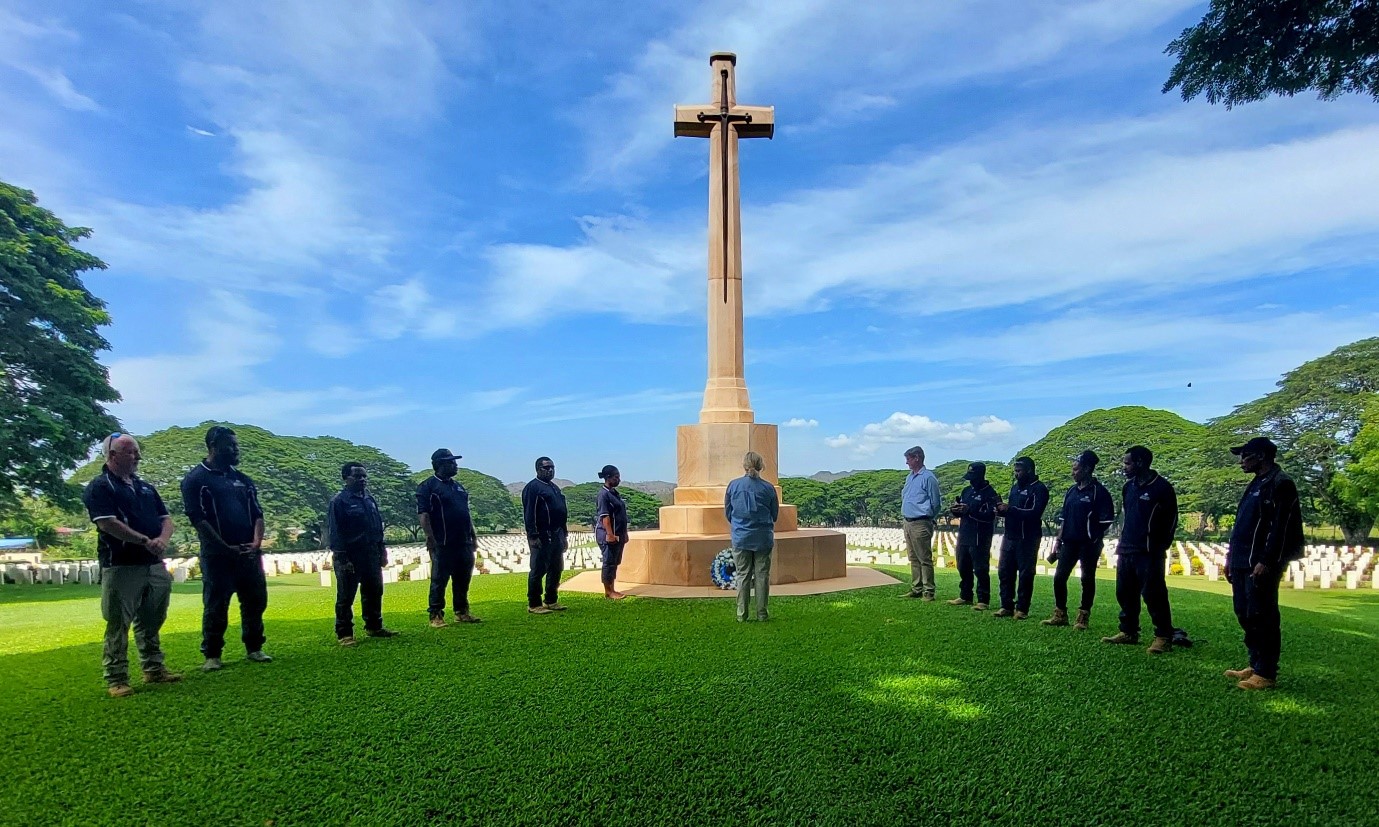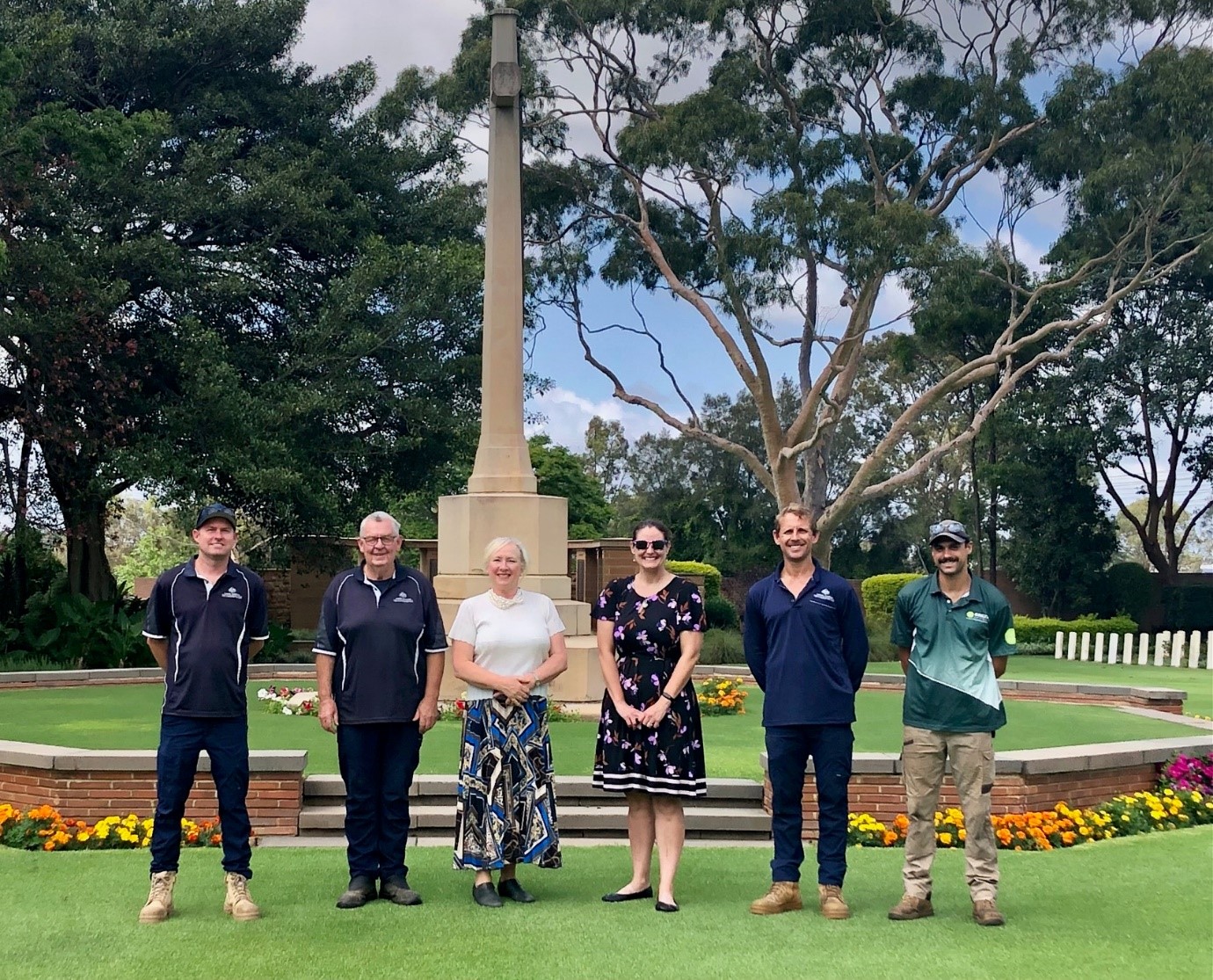Sharing international experience in managing war graves
The Office of Australian War Graves (OAWG) at DVA recently hosted the Director General of the Commonwealth War Graves Commission (CWGC), Mrs Claire Horton CBE.

Mrs Horton saw firsthand the high standards of commemoration and horticultural practice at the Lutwyche, Springvale and Perth War Cemeteries in Australia, and Bomana War Cemetery in Papua New Guinea. These are managed by some 40 horticulturists and arborists, and more than 600 contracted trade specialists who care for the 13,700 Commonwealth war dead of the two world wars, and the 336,000 Australian war dead and veterans who have died of causes related to their war service.
Leading a worldwide organisation that operates at local levels, Mrs Horton champions the value of sharing new developments as the organisation continues to adopt more sustainable ways of working. Mrs Horton was particularly interested in how OAWG manages the use of natural resources and the biodiversity potential and impacts of our commemorative sites.
‘It’s been a superb opportunity to meet such closely connected colleagues across the world and to see the excellent work being done first-hand,’ Mrs Horton said. ‘Sharing ideas and information about our common concerns of managing ageing heritage estates, how we are both testing the use of new technology, and how we develop sustainable environmental practices and global standards, has been something I have much valued.’
Across the world, OAWG and CWGC staff are developing a great deal of experience adapting operational practices in the face of changing weather patterns. Like OAWG, the Commission has reduced its use of chemicals and is committed to promoting and delivering best practice in the effective and sustainable use of resources across its commemorative estate.
Last year, the CWGC launched a new, forward thinking and progressive strategy, Towards 2039, looking at its global role in the future of commemoration. The strategy aims to engage and enrich newer, wider and younger audiences in the Commission’s mission to ensure the names, contribution and stories of our shared fallen are remembered in perpetuity.
Director of War Graves, Brigadier Tim Bayliss AM, added that OAWG certainly has challenges and opportunities ahead as it cares for those we commemorate across Australia’s ageing heritage estate for the next century. ‘The changes we make now must be carefully measured and thought out,’ Brigadier Bayliss said. ‘Whatever we do, Australia’s commemorative mission remains the same: to honour those men and women whose service has led to their deaths either in war or as a result of it.’
The Commonwealth War Graves Commission
Founded by Royal Charter in 1917, the CWGC oversees the provision, care and maintenance of the graves and memorials of the 1.7 million members of Commonwealth forces who lost their lives in the two world wars. Headquartered in the United Kingdom, the CWGC cares for cemeteries and memorials commemorating the war dead in 23,000 locations across 150 countries. Of these, 76 CWGC war cemeteries and plots are located in Australia, Papua New Guinea and the Solomon Islands. They are cared for and managed by the OAWG as the Agent of the CWGC.

Images:
Mrs Claire Horton, Director General of the Commonwealth War Graves Commission, and OAWG Staff at the Bomana War Cemetery
L-R: Corey Wiegold, Geoff Taplin, Claire Horton, Alison McLaren, Matthew Fenney and Mitch Hayne at the Cross of Sacrifice, Sydney War Cemetery
